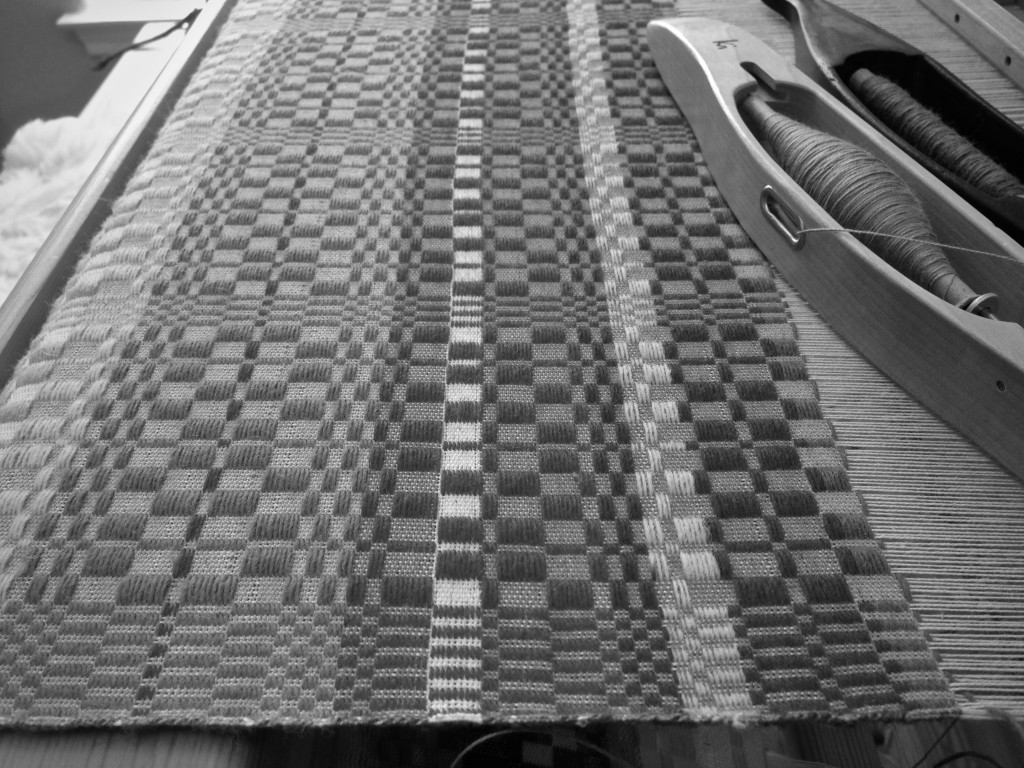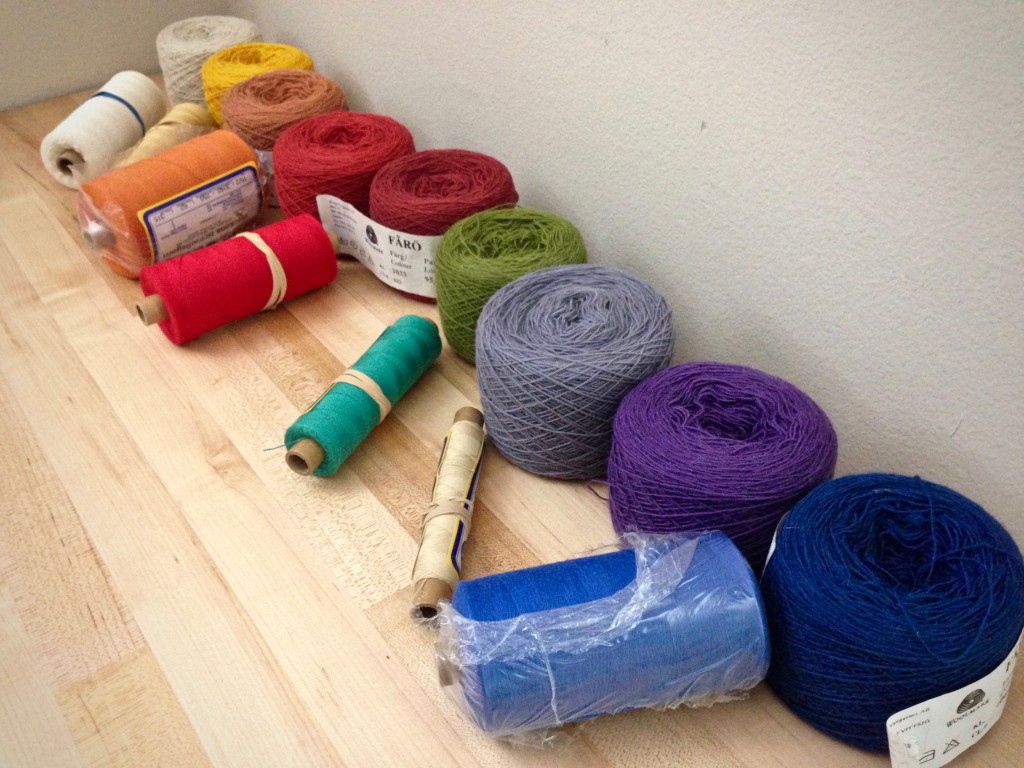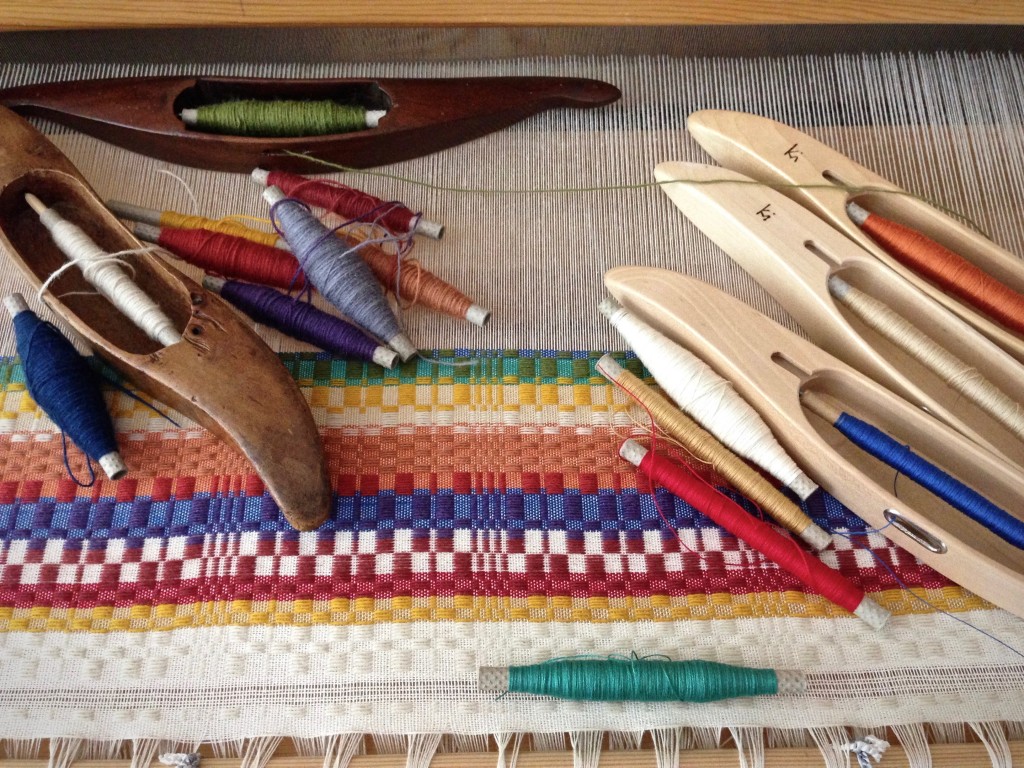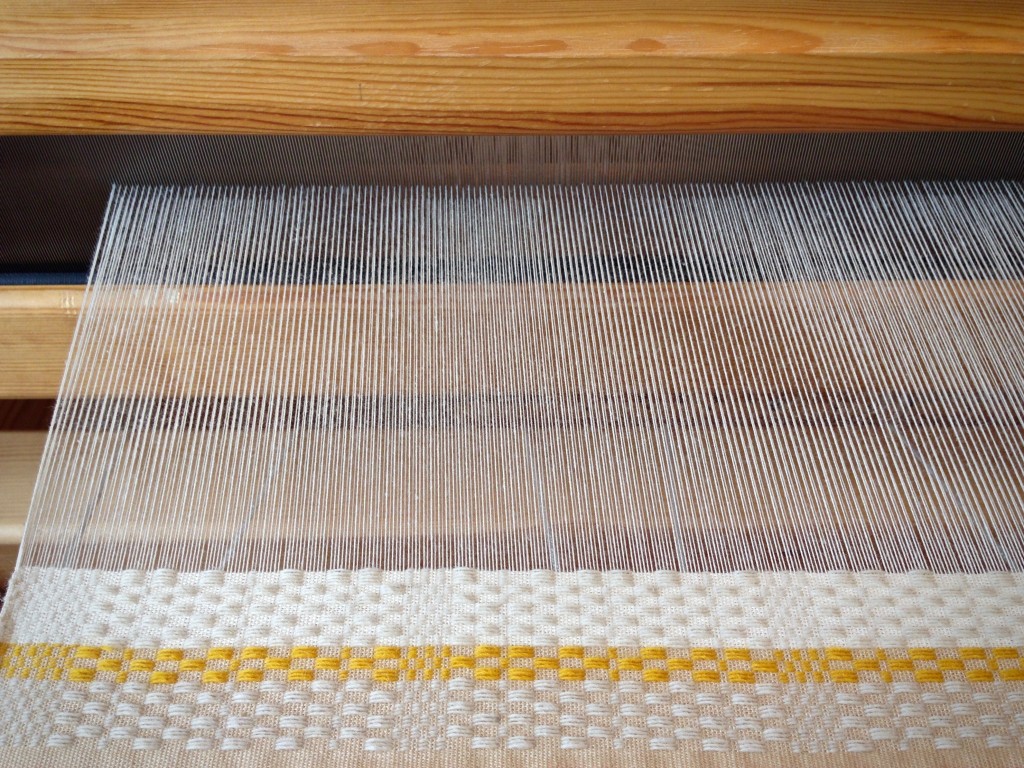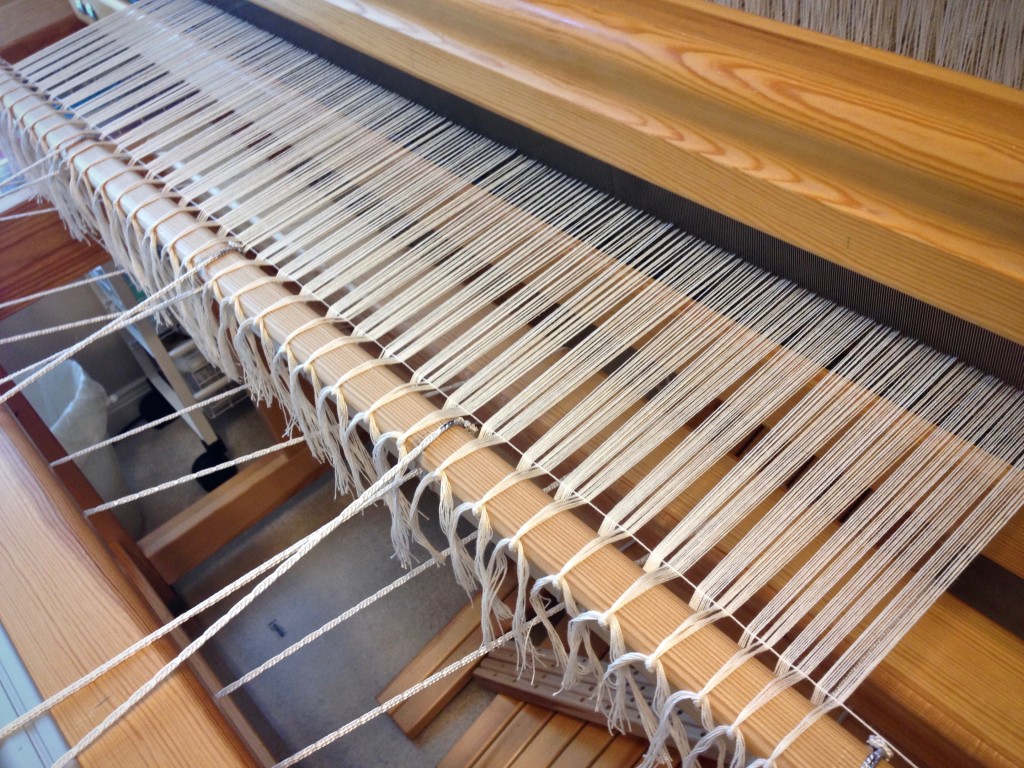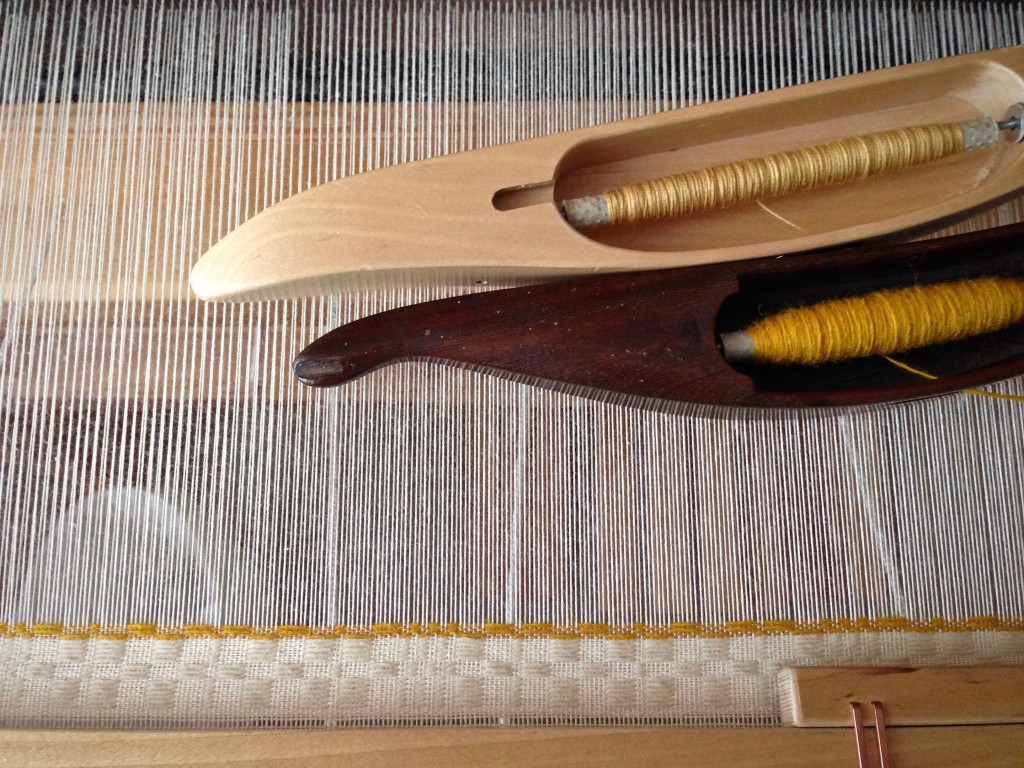After a solid hour of weaving, I have produced only two more inches (5 cm) of woven fabric. I am completely enthralled with the process, though, of this intriguing monksbelt weave. Some of the best things take the most time.

I long to feel the completed cloth in my hands. This weft rep monksbelt is new to me. I honestly don’t know how the hand and drape of the final cloth will be. There is nothing I can do but wait. And, at two inches (5 cm) per hour, that’s a long wait. But I won’t give up. I have enough experience at the loom to know that this is going to be a treasured piece…if I don’t get impatient and cut it off early.
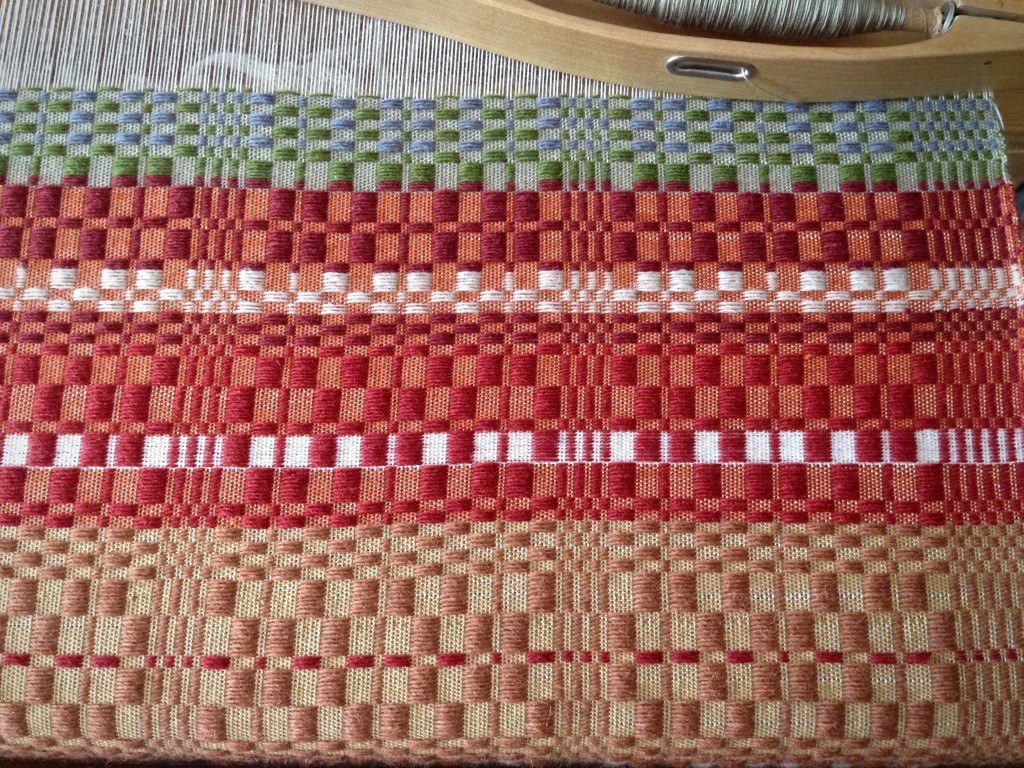
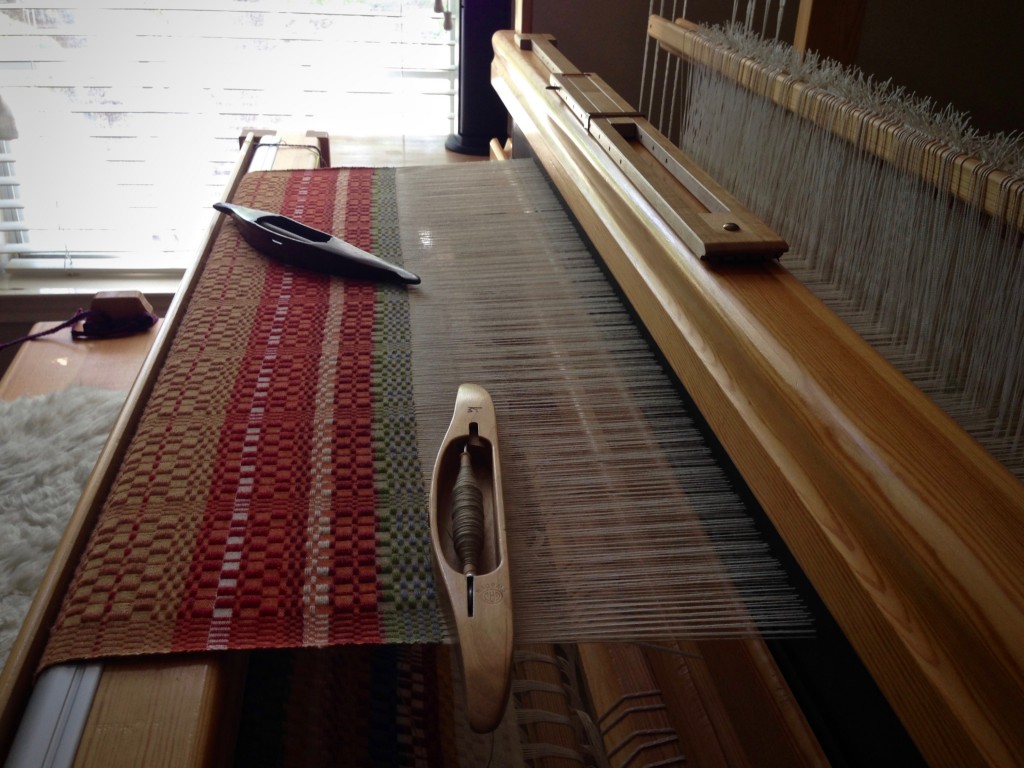
Do you have a prayer waiting to be answered? Sometimes it takes a while. Does that mean that God didn’t hear, or that he doesn’t care? If we could see the invisible, I think we would see things being woven into place–at the right time, in the right way. Do not give up on God. Ask, seek, knock. And remember that our heavenly Father has good in mind for us.
May you rest in the wait.
Patiently,
Karen

